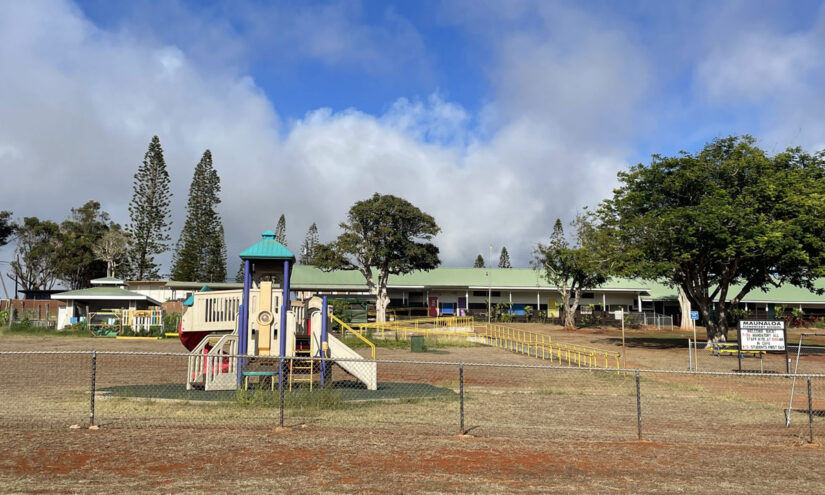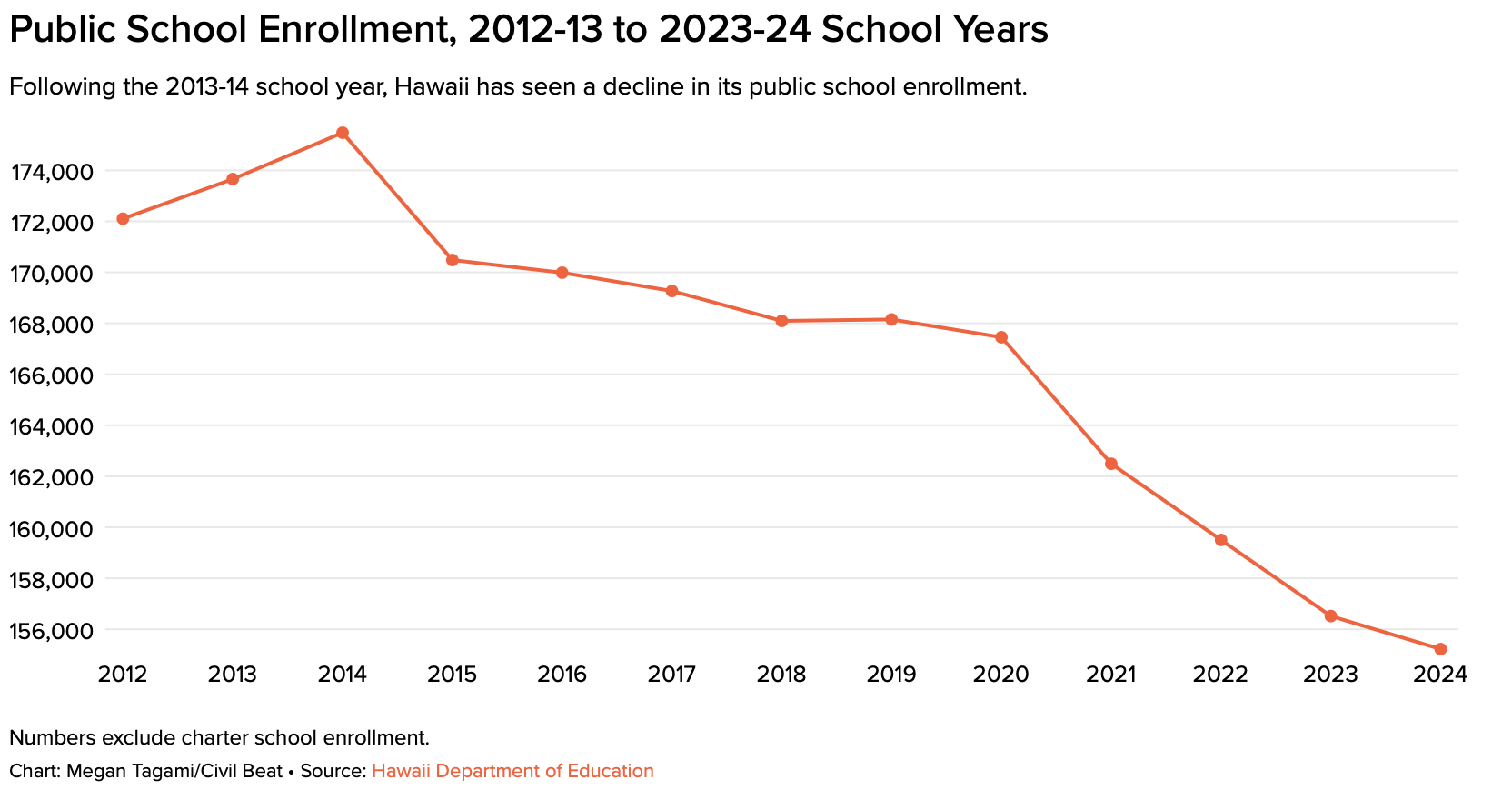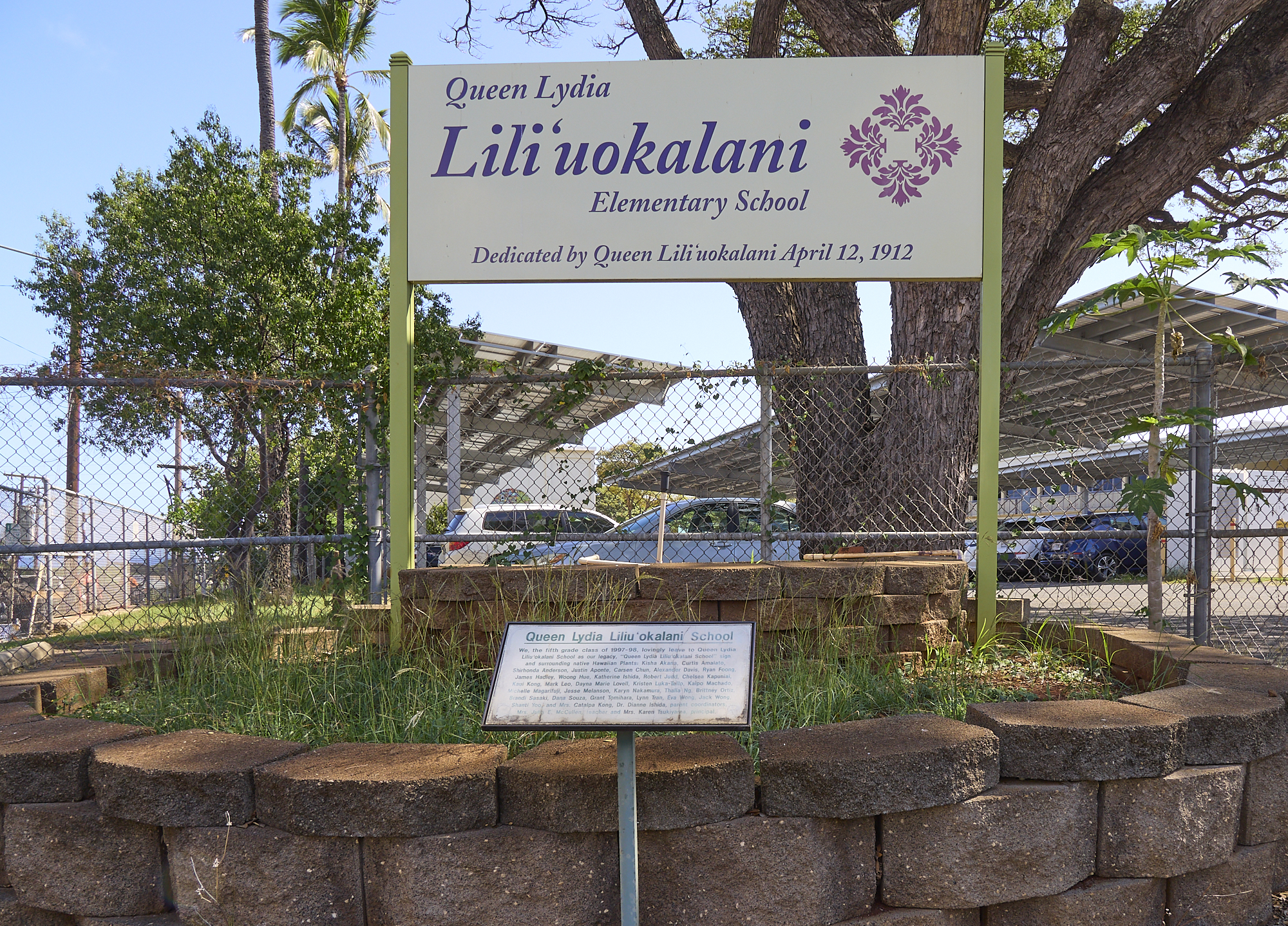During this summer, a team of students from MIT embarked on a journey to the sou …
Challenges Faced in Sustaining Hawaii’s Smallest Public Schools
Jennifer Livingstone

On a rainy day during recess at Kaaawa Elementary School, children from kindergarten to sixth grade enthusiastically explored the school playground, enjoying the puddles and engaging in field games.
When interacting with the students, Principal Jennifer Luke-Payne made a personal connection by calling them by name, engaging in activities like playing soccer and allowing access to play equipment. She even offered comforting hugs to emotionally overwhelmed kindergartners.
“They’re all my babies,” Luke-Payne expressed warmly.
Kaaawa Elementary School has a student body of slightly over 120 pupils, a notably smaller number compared to the average enrollment of about 450 students in Hawaii’s elementary schools.
Running a school with less than 250 students, such as Kaaawa Elementary, presents financial challenges as enrollment directly impacts the annual funding received by the school. Schools like Kaaawa Elementary find it hard to sustain essential teaching positions with budgets hovering around $1 million or less annually.
Over the years, there has been a consistent decline in student enrollment in Hawaii’s state-managed public schools, influenced by factors such as shifting neighborhood demographics and families opting for charter or private schools over public ones.
Small schools accommodating 250 students or less have increased from 19 to 35 in the last decade, leading to intensified financial pressures on their annual budgets. Principals are compelled to make tough decisions like reducing teaching roles or cutting back on classes such as music and physical education.

A recent legislative decision allocated an additional $6 million to support the budgets of small and geographically isolated schools in the upcoming academic year. Principals stress the urgent need for sustainable funding solutions beyond temporary boosts to maintain the schools’ viability.
On the other hand, the Department of Education (DOE) has previously considered consolidating or shuttering small schools. While such actions face community resistance, they become necessary in cases where schools lack the capacity to offer a comprehensive range of educational and extracurricular opportunities, as highlighted by Board of Education Chair Roy Takumi.
Takumi acknowledged the potential discussions on school closures during his tenure on the board, emphasizing the department’s responsibility to instigate the deliberations.
“Schools should ideally have a useful shelf life,” Takumi remarked.
Funding Challenges
At Maunaloa Elementary on Molokai, Principal Kimberly Kaai manages a modest budget of approximately $890,000 per year.
The school’s financial constraints necessitate combining certain grade levels, such as kindergarten and first grade, or fifth and sixth grade, due to the insufficient funds to allocate a teacher for each class. As of September, Maunaloa Elementary stood as the second smallest school in Hawaii with an enrollment of 43 students.
School funding distribution follows the weighted student formula, primarily based on the student count at each school. Additional financial support is provided for students meeting specific criteria like low-income status or identified as gifted and talented.
“The fund received through the weighted student formula is evidently inadequate to fully staff our schools,” Kaai emphasized.
Based on insights shared by Luke-Payne and Waiahole Elementary’s Principal Alexandra Obra, small elementary schools would ideally require annual budgets exceeding $1.38 million to operate effectively.
A committee examining the weighted student formula had identified eight small schools, including Waiahole, Kaaawa, and Maunaloa Elementary, justifying the need for additional funding support. All these schools enroll fewer than 150 students and had projected budgets of $1.3 million or less as of June.
Under the new state budget, these eight schools are slated to receive an extra $250,000 for the 2024-25 academic year. Furthermore, six geographically isolated schools across Big Island, Maui, Lanai, and Molokai will also benefit from additional financial aid.
At Waiahole Elementary, Principal Obra plans to utilize the supplementary funds to recruit a librarian for the school, aiming to enhance educational resources. Currently, Obra manages the library duties herself, underscoring the need for additional staffing support.
Despite their resource limitations, small schools face uncertainty regarding continued financial assistance, posing challenges in teacher recruitment, noted Marlene Zeug, a small school consultant who authored a report on Kaaawa and Waiahole Elementary in 2022. Zeug emphasized the necessity for a consistent funding source beyond occasional financial injections.
“There’s no straightforward solutions,” Zeug concluded.
Small Elementary Schools, Honolulu and Windward Districts
Elementary schools with less than 250 students

DOE committee member Kate Stanley noted that unlike elementary schools, middle and high schools generally face fewer financial obstacles due to their larger student bodies. Nevertheless, some secondary schools encounter budgetary constraints attributed to declining enrollment figures.
At Jarrett Middle School, Principal Reid Kuba recalled making staffing cuts during a period of low enrollment around 2013. However, in recent years, the school has leveraged its small size as a strength, attracting families with promises of smaller class sizes and a tightly-knit community.
While Jarrett Middle remains Oahu’s smallest middle school with an enrollment of 287 students, Kuba affirmed that staffing adjustments haven’t been necessary lately.
“We embraced our status as a small school,” he emphasized.
Debates Surrounding School Closures
Reflecting on the history of potential closures at Waiahole Elementary dating back to the 1990s, community member Frederick Reppun acknowledged lingering conversations about consolidation and shutdowns. Despite reaching its 140th anniversary, the school continues to grapple with uncertainties about its future.
Resonating with various communities, the impacts of budget reductions in 2008 prompted multiple reports exploring the repercussions of shutting down and merging elementary and middle schools, including Waiahole’s partner, Kaaawa Elementary.
While Kaaawa Elementary avoided closure, three other elementary schools – Wailupe Valley in East Honolulu, Keanae Elementary on Maui, and Queen Lydia Liliuokalani Elementary in Kaimuki – met the fate of shutdowns by 2011. Keanae Elementary had ceased enrolling students since 2003, yet opposition towards the closure of Wailupe and Queen Liliuokalani Elementary was unmistakably fervent.
Addressing the dilemmas, former DOE Assistant Superintendent Randy Moore expressed the complexity of such decisions, requiring evaluations of facilities’ quality, academic opportunities, and alternative school placements for affected families.

Having recently resumed his role at DOE as interim deputy superintendent, Moore hinted at the likelihood of further assessments on small schools and the justification for their continued operation.
Sharing perspectives from Kailua, Representative Lisa Marten suggested potential benefits from consolidating schools, particularly noting the proximity of Kaelepulu, Enchanted Lake, and Keolu Elementary Schools. With declining student numbers and potentially redundant services, Marten envisions the consolidation of Keolu Elementary into Enchanted Lake, addressing concerns about diminishing class offerings.
While contemplating the consolidation, Enchanted Lake Principal Noel Richardson raised concerns about the logistical challenges, especially relating to meal services currently provided by Keolu Elementary to neighboring schools. Such considerations highlight the complexities of consolidation efforts.
At Kaaawa Elementary, despite its small size, Principal Luke-Payne emphasized the diverse learning opportunities available to students. Engaging in activities like gardening and environmental initiatives, the school fosters community support and a strong sense of belonging for every child on campus.
“They know they are loved here,” Luke-Payne remarked.
Civil Beat’s education reporting is made possible thanks to a grant from Chamberlin Family Philanthropy.

